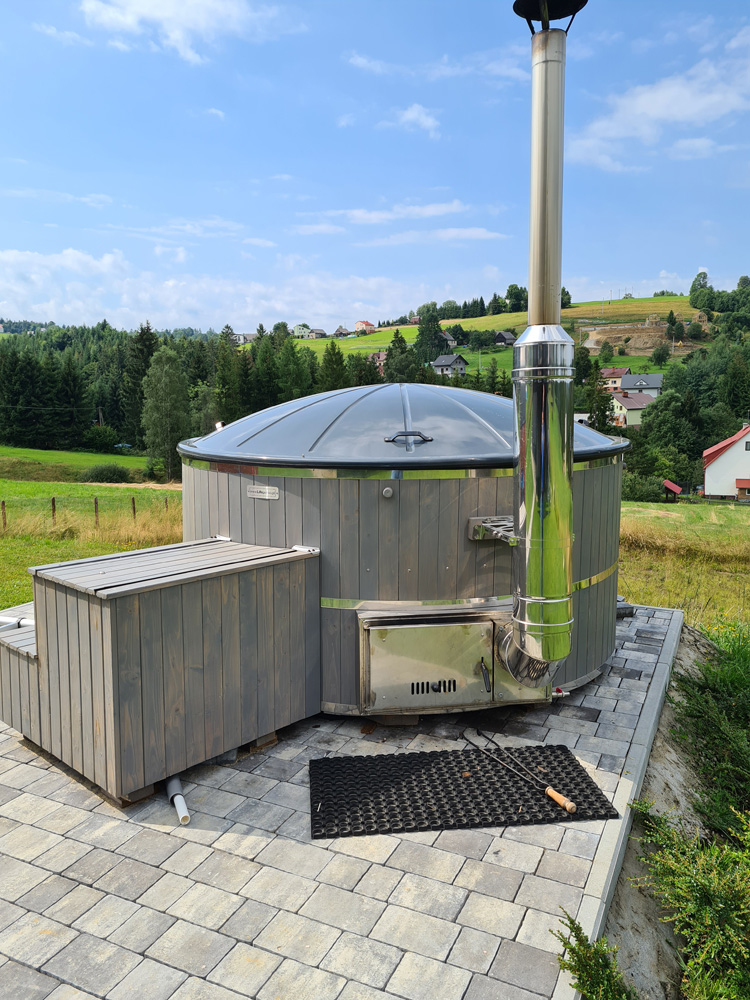The most important and priority is that it should be made of stainless and heat-resistant (acid-resistant) steel. The thickness of the sheet metal is important, especially the grate and hearth in the sauna heater (grate 8mm, furnace sheet at least 2mm). What counts in the tub is the temperature exchange surface, i.e. the surface of the furnace and all its elements that are in contact with water on the one hand and with the hearth on the other, which gives effective water heating. It is a myth that the stove in the tub can keep the temperature for several days without burning! The small mass of the furnace and the density of water cause it to cool down quickly and bring it to the ambient temperature, i.e. water. For obvious reasons, there is no accumulation of thermal energy in such a furnace. A stove made of aluminum is another mistake. Aluminum is very susceptible and not resistant to acids, which are formed as a result of burning wood through the deposition of soot on damp walls from condensed moisture. Compared to stainless or acid-proof steel, aluminum is several times less durable. Pay attention to the quality of the components and production technologies.

In hot tub furnaces, a pressure test of the tightness of welds should be performed. It is very important that the sauna stove is not loaded from the inside. Any smoke and any amount of it is harmful to health. It is important that the burning speed is regulated, especially in the sauna, from the inside. A wood stove seems to be more economical than an electric one, because you can burn cheap wood and wood waste in such a stove. An electric furnace requires the preparation of a three-phase installation, which is not uncommon.

